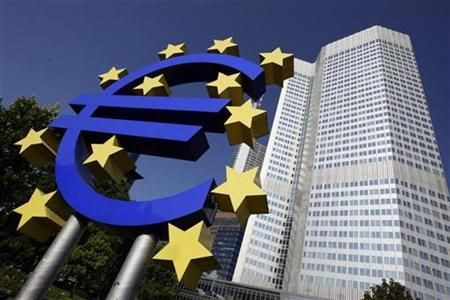Europe in 2012: Renaissance or Lingering Dark Ages?

The outlook for Europe is looking gloomy, especially after the European Central Bank warned that risks to euro area financial stability increased considerably in the second half of 2011, as the sovereign risk crisis and its interplay with the banking sector worsened in an environment of weakening macroeconomic growth prospects.
Euro area bank funding pressures, while contained by timely central bank action, increased markedly in specific market segments, particularly for unsecured term funding and U.S. dollar funding.
European leaders have essentially diagnosed the problem facing the whole eurozone as one of fiscal indiscipline in some wayward countries and have prescribed a remedy of harsh fiscal medicine as a way to regain economic health.
We readily acknowledge that governments need to balance their budgets over the economic cycle, but we believe that excessive focus on deficit reduction at this point in the cycle could be counterproductive for many economies in the euro area, Wells Fargo economist Jay Bryson wrote in a note to clients.
Although Greece, Portugal and Italy all entered the current crisis with budget deficits and elevated debt-to-GDP ratios, Spain and Ireland had exemplary fiscal records. These economies were instead felled by burst housing bubbles.
The capital inflows that contributed to the housing bubbles in Spain and Ireland led to real exchange rate appreciation, which caused a loss of price competitiveness. Greece, Portugal and Italy also experienced a loss of competitiveness that will have important implications for their growth prospects.
Economic growth is a crucial ingredient for many countries to stabilize their debt-to-GDP ratios. This is especially true for Italy, which has nearly 2 trillion euros in outstanding government debt. With Italy unable to devalue its currency, the ECB limited in its ability to cut interest rates further and with fiscal tightening in train, Italy has dim growth prospects over the next few years.
In our view, the ECB will ultimately need to offer unlimited support to the Italian bond market to prevent a generalized financial crisis, said Bryson.
Concerns about the debt situation in peripheral Europe started to fester almost three years ago. However, the crisis really burst upon the world stage when the three primary credit rating agencies (Moody's, Standard & Poor's and Fitch) all cut their sovereign debt ratings for Greece in December 2009.
Since that time, there have been countless meetings of European and other world leaders in what is often billed as the decisive meeting to permanently address the sovereign debt crisis. Bailout packages have been arranged for Greece, Ireland and Portugal, and terms like the European Financial Stability Facility and the European Stability Mechanism have entered the financial lexicon.
At the European Union summit on Dec. 9, leaders agreed to a fiscal pact whereby each country would enshrine balanced budget resolutions at the constitutional or equivalent level.
Debt stabilization is generally defined as a situation in which a given country's debt-to-GDP ratio is stable. Debt sustainability primarily depends on four factors: the debt-to-GDP ratio at present, the government's primary fiscal surplus or deficit (i.e., the fiscal position net of interest payments), the nominal GDP growth rate and the rate of interest the government needs to pay on its debt.
A country's long-run growth rate and long-term interest rate are largely beyond the direct control of the government, but countries do typically have the ability to control primary balances.
However, Bryson said it would take years for the economic reforms that were needed to restore growth to work, and markets likely will not remain patient for that long.
Therefore, we believe that some institution, which we expect will be the ECB, will be needed to offer unlimited support to the Italian government bond market until stronger economic growth begins to take root in Italy, said the economist.
Meanwhile, some economists have argued that eurobonds, which would be bonds issued by individual European governments but which would have the backing of all governments in the eurozone, could also be used to put out the fire.
Although we agree that a joint guarantee of individual government debt, or at least a portion of it, would likely lead to a significant reduction in borrowing costs in Italy et al., the concept of eurobonds has encountered significant opposition from Germany and some other northern European countries. Therefore, we believe that the issuance of eurobonds is not very likely anytime soon, noted Bryson.
Other experts have pointed to the possibility of involvement by the International Monetary Fund. However, the lending capacity of the IMF is limited to roughly 300 billion euros at present. Even with the 200 billion euros of additional funds that EU leaders agreed to lend the IMF at the recent EU summit, the enhanced lending capacity of the IMF falls well short of Italy's 2 trillion euros in outstanding government debt.
There is a chance that China and some other important developing economies may increase their support to the IMF, but it is unlikely they would be able to pony up all the resources needed to fully backstop Italy.
Therefore, the economist maintains that the ECB is effectively the only institution that would be able to offer unlimited support to Italy. However, he fears that there may be a back against the wall moment at some point in the not-too-distant future in which the ECB will need to choose between unlimited support to Italy or the possible dissolution of the European Monetary Union.
Although perhaps not as bleak as the 'Dark Ages,' a breakup of the eurozone would truly be a catastrophic event, not only for Europe but for the entire global economy as well, added Bryson.
© Copyright IBTimes 2025. All rights reserved.




















